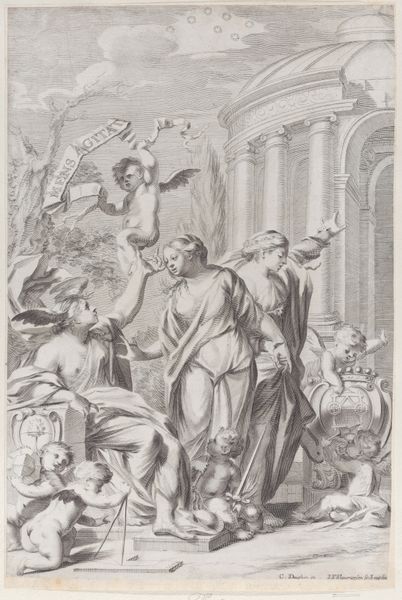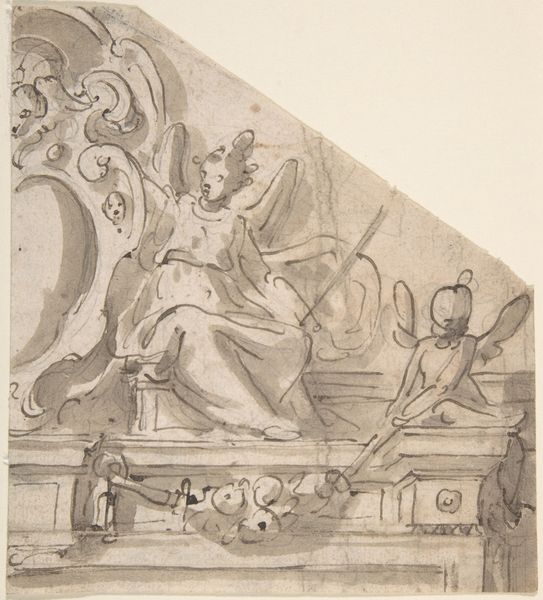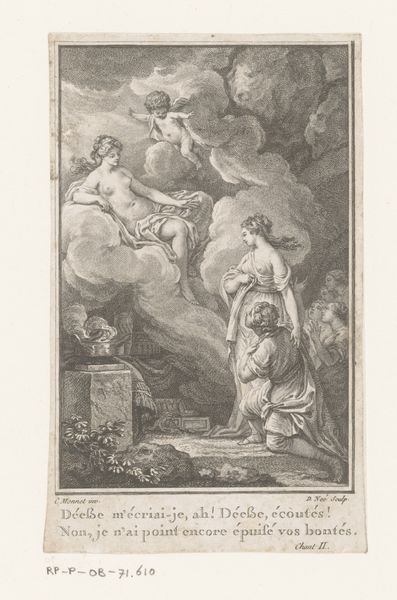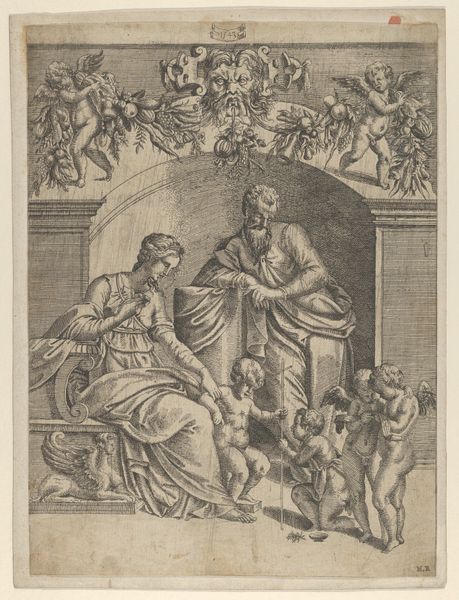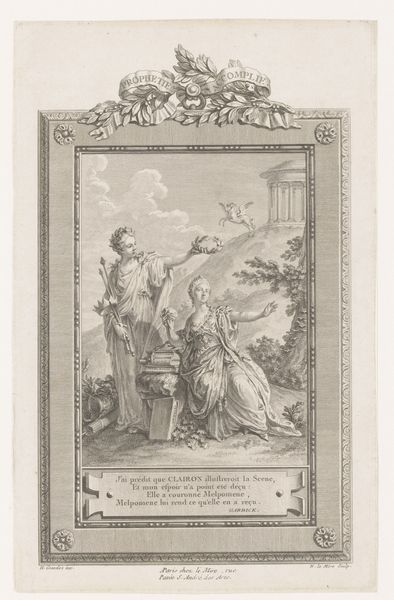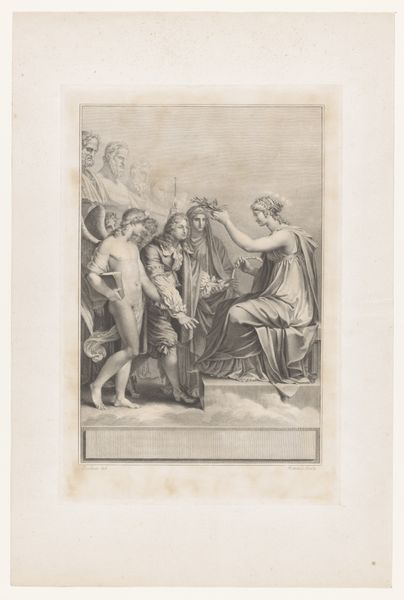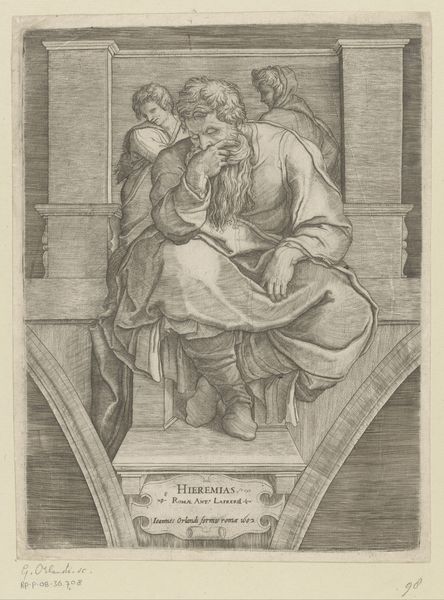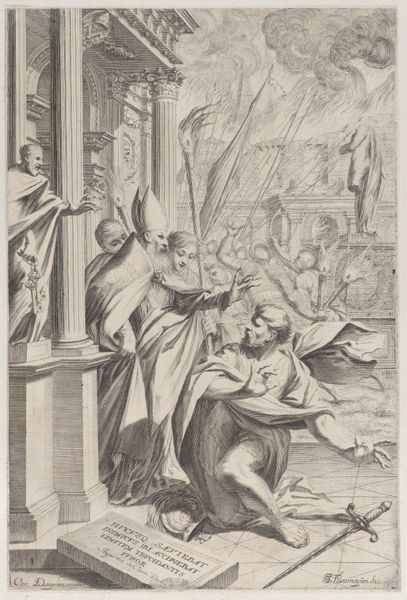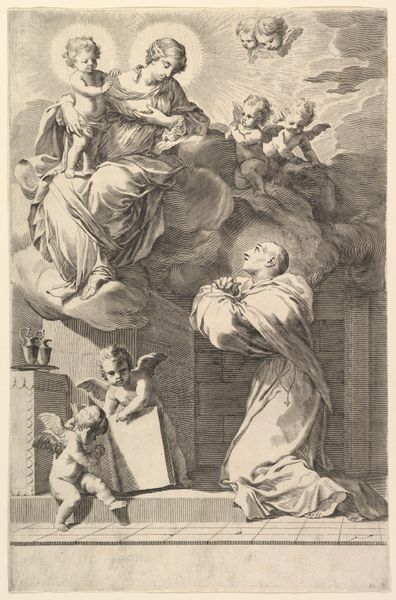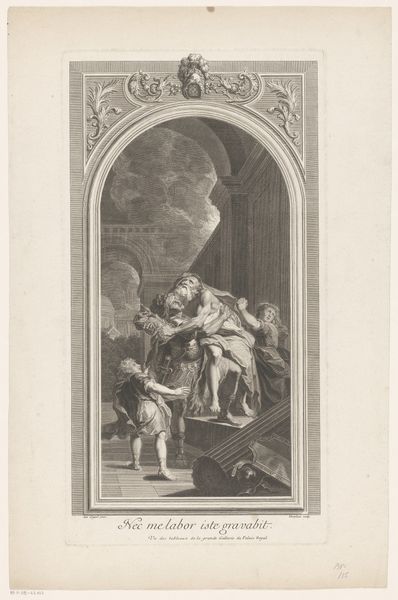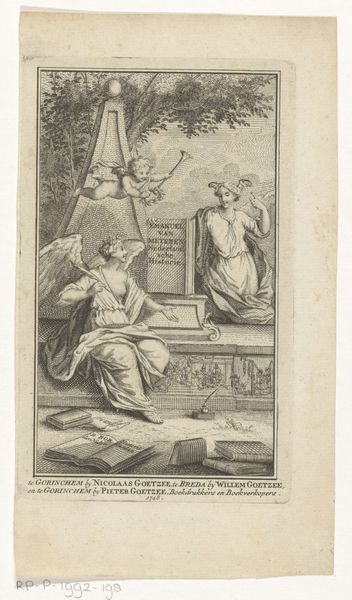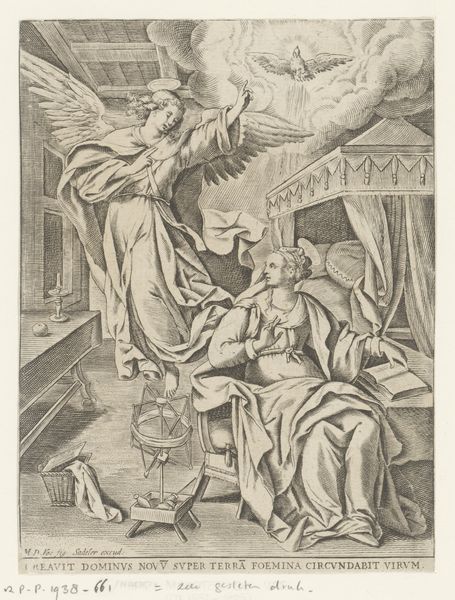
print, engraving
#
allegory
#
baroque
# print
#
old engraving style
#
traditional media
#
figuration
#
line
#
history-painting
#
engraving
Dimensions: height 310 mm, width 224 mm
Copyright: Rijks Museum: Open Domain
Editor: So, here we have Claude Mellan's engraving, "Personificatie van het Geloof geeft aan engel een boek," from 1643. It's currently housed in the Rijksmuseum. The delicate linework and composition give it an ethereal quality, and it feels very much of its time. How do you interpret the meaning behind it, considering its historical context? Curator: Well, thinking about its place in history is key. This image, made during the Baroque period, points to the Catholic Church's efforts in the Counter-Reformation. Mellan created this in a time when religious and political powers were intricately linked, especially within institutions like the Imprimerie Royale du Louvre. How do you think the presence of this image, and its message, served that royal printing house? Editor: I suppose it would add a layer of divine legitimacy. It subtly says, "We're not just printers; we're divinely sanctioned purveyors of knowledge". Did this kind of allegorical image play a broader role in shaping public perception, then? Curator: Absolutely. These engravings acted as a form of visual propaganda, subtly reinforcing Catholic doctrine and the authority of the monarchy. They weren't merely aesthetic objects. How do you perceive the artist's position, creating works for the very powerful Royal Printing House? Editor: I guess Mellan was both artist and instrument, crafting images to support an existing power structure. He uses traditional religious symbology, but to promote a contemporary agenda. It's a clever blend of the sacred and the political. Curator: Precisely. He’s navigating complex institutional dynamics. By producing images like these, Mellan's artistry directly supported and shaped the sociopolitical landscape of 17th-century France. What can we understand about power structures within Baroque-era France when examining Mellan’s choices? Editor: It really illuminates how art, even something seemingly devotional, served to uphold existing power structures. The piece becomes a visual embodiment of that interplay. It's fascinating to consider how deeply art was embedded within politics and religion back then. Curator: Indeed. It demonstrates that art’s “public role” often reflected strategic sociopolitical goals rather than merely artistic or expressive desires.
Comments
No comments
Be the first to comment and join the conversation on the ultimate creative platform.
